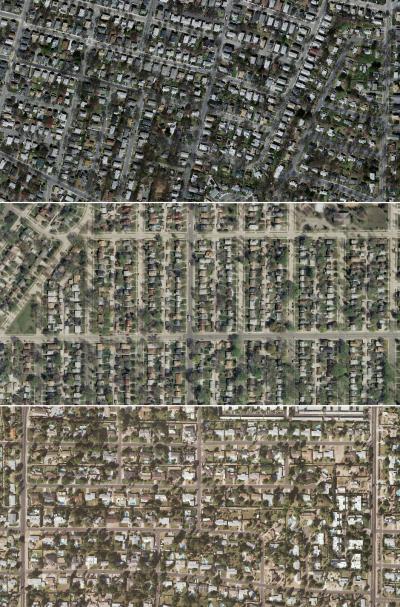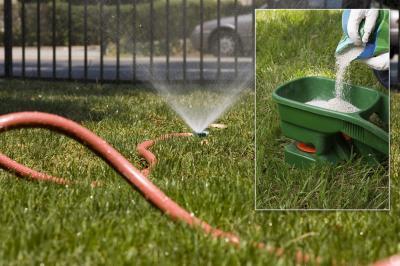What do people living in Boston, Pittsburgh and Los Angeles have in common? From coast to coast, prairie to desert, people love their lawns.
If only there was a study that dug deeper, like examining differences in fertilization and irrigation practices.
Don't scoff, the authors of a paper in the Proceedings of the National Academy of Sciences assure us that with 80 percent of Americans living in urban or suburban neighborhoods, understanding urban lawn care is vital to sustainability planning.
The study was undertaken to test "the homogenization hypothesis." Peter Groffman, a scientist at the Cary Institute of Ecosystem Studies and one of the paper's authors explains, "Neighborhoods in very different parts of the country look remarkably alike, from lawns and roads to water features. This study is the first to test if urbanization produces similar land management behaviors, independent of the local environment."

If aliens looked at our lawns, they would find we are all in agreement. Urban and suburban areas are more similar to each other than to adjacent native ecosystems. From top: Boston, Minneapolis-St. Paul, Phoenix. Credit: US Geological Survey / Cary Institute of Ecosystem Studies
Some 9,500 residents in the six study cities were queried about their lawn care habits. The research team, led by Colin Polsky of Clark University and colleagues at 10 other institutions, took into account differences in climate and neighborhood socioeconomics, both within and between cities. A focus was put on fertilization and irrigation, practices with potentially hefty environmental price tags.
Fertilizer is rich in nitrogen and phosphorus. This stimulates lawn growth, but when fertilizer washes into waterways, it causes algal blooms that degrade water quality and rob oxygen from fish and other aquatic life. According to the Environmental Protection Agency, landscape irrigation accounts for nearly one-third of residential water use nationwide.
Some 79% of surveyed residents watered their lawns and 64% applied fertilizer. Groffman comments, "These numbers are important when we bear in mind that lawns cover more land in the United States than any other irrigated crop. What we do in our suburban and urban yards has a big impact, for better or worse, on the environment."

Irrigation practices are driven by climate but fertilization is for the rich. Credit: Matt Howe (irrigation), Bochkarev Photography (fertilizer)
Among the survey's findings: residents of Boston and Miami – cities with very different climates – had similar fertilization rates. And, perhaps unsurprisingly, in the study's two driest cities (Phoenix and Los Angeles) irrigation was positively correlated with affluence. But overall, local climate and social factors led to more lawn care variability than initially expected, both between and within cities.
Polsky notes, "One of the take-home lessons is that responding to lawn care-related environmental challenges may require locally-tailored solutions in more cases than we initially thought. Place matters, there is not a one-size-fits-all approach."
Groffman added, "The management of urban and suburban areas has a direct impact on water resources, carbon storage, and the fate of pollutants, like nitrogen and phosphorus. Yards are also where our environmental knowledge, values, and behavior are likely generated. The good news is that individual actions, on a yard-to-yard-basis, can make a difference."






Comments